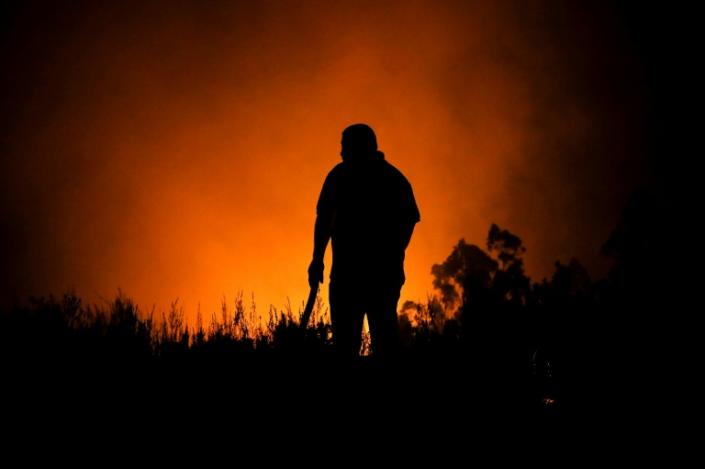A new paper in Ornithological Applications, published by Oxford University Press, reviews multiple ways in which the field of ornithology systemically excludes researchers and research from Latin America and the Caribbean, despite this region harboring the most bird species on Earth. The paper, signed by 124 ornithologists (including professional scientists, naturalists, park rangers, and technicians) from 19 countries, also explains what the field might do to start addressing the problems identified.
A major barrier to advancing ornithology, says the paper, is the marginalization of researchers from the Global South, meaning Latin America, the Caribbean, Africa, and most of Asia. Latin America and the Caribbean is home to 3700 bird species, across habitats from lowland tropical rainforest to the High Andes. It also includes more than 40 countries and a human population comparable to that of Europe. Yet of the 10 papers published in a recent special feature about the region (in Advances in Neotropical Ornithology), only three included authors affiliated with an institution within the region. Such discrepancies are widespread in peer-reviewed scientific journals and, the authors argue, result from a long history of colonialism that scientists continue to sweep under the proverbial rug.
The paper explains that language hegemony, publication costs, and North-biased views of what is novel exclude many excellent ornithologists from publishing in global-scope journals and dramatically reduce the extent to which their work is cited.
The authors noted that reviewers and editors rarely ask scholars from Europe, Canada, or the United States to translate, learn, or cite theory and case studies from Latin America or Africa, but they routinely expect scholars from the Global South to frame their work in the context of research from Europe or North America.
The paper argues that such systemic barriers are not only unjust to researchers from the Global South; they are also detrimental to ornithological scholarship and bird conservation. Scientific rigor, the authors point out, is not simply the sum of individually rigorous research articles, but an emergent property of a collection of complementary studies from a diversity of regions and perspectives. For example, patterns of bird sexual behavior and nest orientation, initially purported to be global, turned out to hold only in the northern hemisphere when researchers included data from Latin America and the Caribbean.
The authors noted that the geographical and cultural richness of ornithological knowledge, and conceptualizations of birds, are inherent even in bird names. Indigenous Peoples and other communities in Latin America tend to name birds for their behavior (e.g., in Mupuzungun, “küchag”―which leaves waste after eating), vocalizations (“fio-fio”), or the time of year they are present, reflecting both knowledge of their ecology and an unambiguous method of species identification (calls and songs).
In contrast, their English names, and, increasingly, Spanish derivatives, reflect broad, often ambiguous taxonomic categories, a general geographic location (“Patagonian Sierra Finch”), or the appearance of museum specimens (“White-crested Elaenia”), which are not always useful and can even be misleading in field identification. The authors argue that ornithologists―in the Global North and South―have set back their own field by suppressing the rich and nuanced ornithological knowledge of Indigenous Peoples and other communities across Latin America and the Caribbean.
The authors of the paper recognize that there is no easy recipe to eliminate all of the injustices in science that arise from centuries of colonialism, but they encourage all scientists to notice, question, and interrupt the systems that perpetuate existing hierarchies of class, race, gender, and geography.
To begin addressing the long legacy of colonialism in science, they suggest that researchers worldwide ensure that they read and cite work from the Global South, especially work by Indigenous, Black, and Brown women. They propose that institutions should adopt new policies and assessment criteria that encourage researchers to step back from top-down positions and support collective leadership that includes people outside academia.
The authors urge global-scope journals to maintain or create options for free or low-cost publication, to offer the option of a submission and review process in Spanish, and to ensure that papers about birds in Latin America and the Caribbean include the full participation of authors from the region, from the design of the study to the interpretation of the results. They also propose that global-scope ornithological journals should adjust their criteria for publication with the aim to publish all scientifically robust and ethically rigorous ornithology research submitted by first authors based in Latin America or the Caribbean, including negative results and articles on basic biology.
The groundwork for such change is already in place: ornithology in Latin America and the Caribbean is now underpinned by regional institutions, conservation programs, and a rapidly growing cadre of students, professionals, and non-academics based in this region, who creatively propel the discipline. Today locally driven and government-funded research, scientific societies, universities, scientific collections, non-governmental organizations, community-science projects, international collaborations, and contributions from independent naturalists, birding clubs, tour guides, environmental licensing studies, Indigenous communities, and park rangers make ornithological research in the Neotropics possible.
“Colonialism still has profound impacts in our society, whether people feel comfortable with that or not, said Letícia Soares of Saint Louis University, one of the lead authors of the publication. “We (researchers in the Neotropics) often enforce the colonialist perspectives. Field biology has such a strong enforced stereotype of having been pioneered by white European males. Disrupting this narrative should be a commitment of everyone in the field. Then we can walk toward acknowledgment, justice, and reconciliation, both in ornithology and other field sciences.”
The paper, “Neotropical ornithology: Reckoning with historical assumptions, removing systemic barriers, and reimagining the future,” is available (at midnight on February 7th) at: https://academic.oup.com/condor/article-lookup/doi/10.1093/ornithapp/duac046.
Direct correspondence to:
Ernesto Ruelas Inzunza
Universidad Veracruzana
Instituto de Biotecnología y Ecología Aplicada
Xalapa, Ver., México 91090
ruelas.uv@gmail.com
To request a copy of the study, please contact:
Daniel Luzer
daniel.luzer@oup.com
JOURNAL
Ornithological Applications
METHOD OF RESEARCH
Systematic review
SUBJECT OF RESEARCH
Animals
ARTICLE TITLE
Neotropical ornithology: Reckoning with historical assumptions, removing systemic barriers, and reimagining the future
ARTICLE PUBLICATION DATE
7-Feb-2023





.png)
